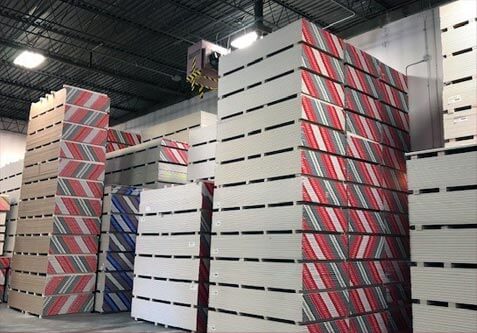Concrete is a versatile and widely used construction material known for its strength and durability. It is composed of a mixture of cement, water, and aggregates such as sand and gravel. While sand is commonly used as the aggregate in mortar mix, there is a growing interest in incorporating gravel to enhance the concrete's strength and performance. In this blog post, we will explore the advantages of adding gravel to mortar mix and discuss how it can contribute to the overall quality of concrete.
- Understanding the Role of Aggregates in Concrete:
Aggregates play a crucial role in concrete by providing bulk and stability to the mixture. They occupy approximately 60-80% of the total volume and significantly impact the strength and durability of the final product. Traditionally, sand has been the primary choice for mortar mix due to its fine texture and ability to fill voids. However, gravel offers unique advantages that can enhance concrete properties. - The Benefits of Adding Gravel to Mortar Mix:
2.1 Improved Strength and Load-Bearing Capacity:
Gravel, with its larger particle size, contributes to a higher compressive strength of concrete. The interlocking nature of gravel particles creates a stronger matrix, resulting in enhanced load-bearing capacity. This makes it particularly beneficial for applications that require high-strength concrete, such as foundations, bridges, and heavy-duty pavements.
2.2 Enhanced Durability and Crack Resistance:
The inclusion of gravel in mortar mix improves the concrete's resistance to cracking. The larger particles act as internal reinforcements, reducing the formation and propagation of cracks. This is especially advantageous in environments with temperature fluctuations, freeze-thaw cycles, or heavy traffic loads, where concrete is subjected to increased stress.
2.3 Improved Workability and Cohesion:
Gravel particles provide better workability to the mortar mix, making it easier to handle and place. The increased cohesion between the aggregates and cement paste results in a more homogeneous mixture, reducing the risk of segregation. This is particularly valuable in large-scale construction projects where efficient placement and compaction are essential.
- Considerations and Best Practices:
3.1 Proper Proportions:
To ensure optimal performance, it is crucial to maintain the correct proportions of gravel, sand, cement, and water in the mortar mix. The appropriate ratio will depend on the specific application and desired concrete strength. Consulting with a structural engineer or following established guidelines is recommended.
3.2 Gradation and Size:
The selection of gravel size and gradation is essential for achieving the desired concrete properties. A well-graded mixture with a range of particle sizes ensures better packing and interlocking, resulting in improved strength and durability. It is advisable to use a combination of coarse and fine gravel to optimize the overall performance.
3.3 Adherence to Local Codes and Standards:
Before incorporating gravel into mortar mix, it is essential to consult local building codes and standards. These regulations may specify requirements for aggregate types, proportions, and quality control measures. Adhering to these guidelines ensures compliance and guarantees the structural integrity of the concrete.
Conclusion:
By adding gravel to mortar mix, concrete can benefit from increased strength, improved durability, enhanced workability, and reduced cracking. The interlocking nature of gravel particles contributes to a stronger matrix, making it an excellent choice for various construction applications. However, it is crucial to maintain proper proportions, consider gradation, and adhere to local codes and standards to achieve the desired results. Incorporating gravel into mortar mix opens up new possibilities for creating robust and long-lasting concrete structures.

